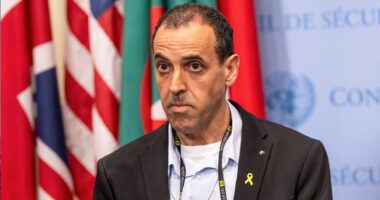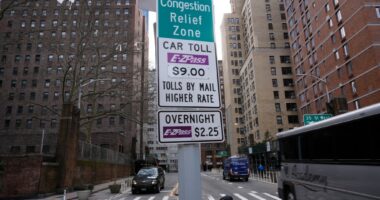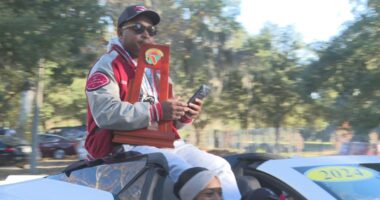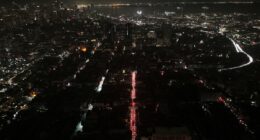Share this @internewscast.com
A LOST city where Mayan rebels held out against Spanish conquerors has been found after 300 years.
The Mayan tribe held their fort against Spaniards for over a century before they were conquered.
The Lakandon Chʼol fled their capital, Lakam-Tun, at Lake Miramar in modern-day Mexico, in the late 1500s.
They then retreated into the jungles near the the present Guatemalan border where they established a new stronghold Sac Balam.
The Mexican rebels resisted the Spaniards for 109 years until the city fell in 1695.
Sac Balam ultimately disappeared into the jungle while the Lakandon Chʼol were forcibly relocated.
The Mexican tribe all went extinct by the mid-18th century.
Now scientists say they have found Sac Balam, using a groundbreaking predictive model to locate foundations and artefacts in the wilderness.
The researchers relied on the testimony of Diego de Rivas, a friar who was active in the region during the late 17th-century.
Josuhé Lozada Toledo from Mexico’s National Institute of Anthropology and History (INAH) stated: “I pinpointed the potential site of Sak Bahlán using a predictive model created through Geographic Information Systems.”
“I revisited colonial chronicles to map the number of days Friar Diego de Rivas spent travelling from Sak Bahlán to the Lacantún River in 1698.
“In this way, I was able to predict the location of this important site.”
Sac Balam or Sak Bahlán means “White Jaguar” in the Mayan language which evokes the perils of its remote location.
According to Dr. Lozada Toledo: “The remote jungle location and its challenging terrain enabled the Lakandon Chʼol to evade the Spanish conquerors.”
“It is a land filled with dangerous animals and plants, and hidden behind the mountains.
“It is very remote, situated in the Montes Azules Biosphere Reserve, in the Chaquistero range.
“Reaching the place requires hiking for several hours and camping in the jungle. It is located southeast of Lake Miramar.
“They managed to live independently from Spanish rule for 109 years, from 1586 when they left their previous settlement at Lake Miramar, until their conquest in 1695.”
After conquering the stronghold, the Spaniards renamed it Pueblo de Nuestra Señora de Los Dolores – Town of Our Lady of Sorrows.
Josuhé said: “A massacre or genocide was carried out there by the Spanish against the local inhabitants.
“The few survivors were taken to Guatemala, and nothing was ever heard about Sak Bahlán again.”
An expedition to the site, backed by the Discovery Channel, has now discovered foundations, the remains of a wall, and a variety of artefacts.
The archaeological team includes Brent Woodfill of Winthrop University in the US and Yuko Shiratori of Rissho University in Japan.
Dr Lozada Toledo called it “the most demanding fieldwork of my life”.
He said: “All that remains of the city are the foundations of small, low structures – only about 30 to 40 centimetres high.
“And there are archaeological materials buried underground, which we are currently in the process of studying.
“Currently, we’ve uncovered pre-Hispanic pottery, ceramic figurines, obsidian, and fragments of a wall or fortification, through the efforts of Dr. Woodfill and Dr. Shiratori.”
“The upcoming step involves analyzing the artifacts unearthed during the dig, continuing with the excavations, and using metal detectors to locate 17th-century metal tools.”
Josuhé hopes their work will shed new light on the Lakandon Chʼol.
He said: “I aim to give voice to the Maya groups that were silenced by Spanish colonisation.
“My main objective is to work with the popular Maya culture that once lived in Sak Bahlán.
“I want to learn more about their customs, religion, and daily life, as well as the way they were annihilated under Spanish rule.
“They were the last rebels to be conquered in the state of Chiapas.”





















